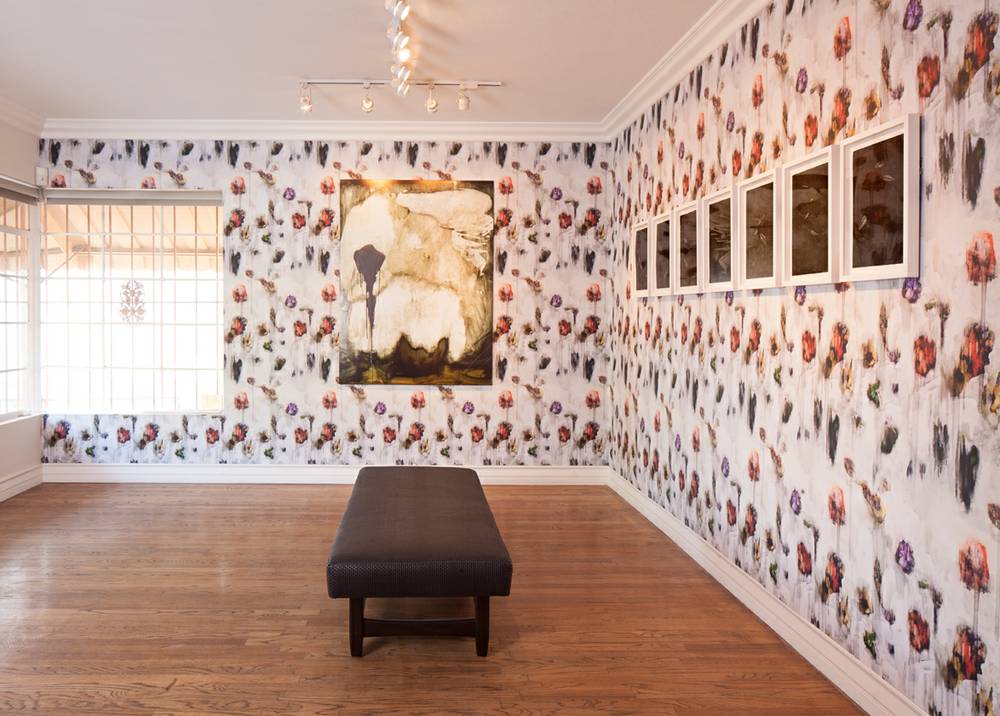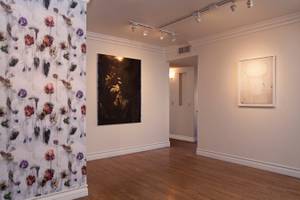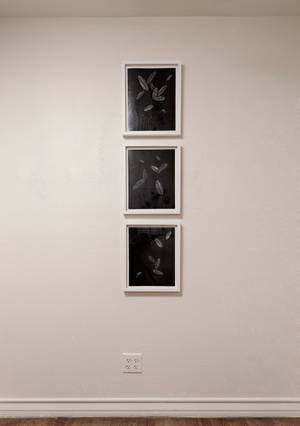
Erik Beehn Through May 20; Monday-Friday, 9 a.m.–5 p.m. MCQ Fine Art Advisory, 620 S. 7th St., 702-366-9339.
Former Las Vegan Erik Beehn’s MCQ Fine Art Advisory show takes a leap—into achievement, surely—but also into the beguiling gap between images and how we read them. Look at his flowery show: Blossoms! Springtime! So darn pretty! Well … sort of. This art raises deeper questions of how we see in a world deluged by digital photos, awash in visual data and inundated by pixelated versions of reality.
At the exhibition’s source is an unassuming photograph of a 1930 reproduction of a flowerpot—an image of an image, and the first step in an iterative process. Beehn photographed and printed the flowerpot, dissolving ink with emulsifiers to draw into the image. Then he rephotographed, reprinted, and re-emulsified—up to 26 times. Often he added paint and/or graphite, photographing the print and beginning again. In the 18 works on display, ink, paint and/or graphite meld, while the flowerpot mutates, expands, contracts, solidifies, alternately shirking and embracing its flowery identity.
Perhaps the most “floral” manifestation in the exhibition is the cheerfully disarming wallpaper that pings both quaint hotel rooms and the Nevada Test Site. Jaunty blossoms cover two walls, their heavy heads resembling mushroom clouds. One patterned wall features the large, atmospheric “68007970,” in which billowing blobs of bleached flowers froth from the pot, while on the other hang eight smaller, powerfully understated works covered in graphite, a few labile or phallic leaves floating suggestively out of the void.
Despite his bouquet of crisp colors, Beehn exhibits a preference for polarized values—either very black or very white—a consequence, in part, of the iterative emulsifying process. For example, in the dark 57-inch by 43-inch “Access and Excess,” the pot seems on the verge of manifesting from obscurity, almost as if its molecules were struggling to materialize in a field of spacetime floral potential. At the opposite end of the spectrum is the “Photo Back #1.” In this monochromatic 28-inch by 22-inch work, a white field metamorphosizes the flowerpot into a Philip Guston-esque composition, the blossoms forming creamy, jellyfish dollops as their tentacles release from a spectral launch pad.
Beehn’s talent shines where and how he reveals and conceals the image through erasure techniques; in his third-generation master printer’s eye for image and layout; and in the tension he obtains between figure and ground. Residual images of the flowerpot emerge from and fade into the background in individual pieces, while works hung on wallpaper claim “figure” to the papered “ground.”
By basing his art on a vintage stock photo, Beehn challenges the automatic ways we judge images: Flowerpots are traditionally disdained as “women’s art,” 17th-century Dutch still lifes notwithstanding. Flowerpots are kitschy images bereft of power, banalized at Kmart and Wal-Mart, ready for hanging. Perhaps Beehn’s greatest achievement is that he allows us to see them anew.








